We all know that our mobile devices and gadgets are essential parts of our daily lives. But what happens when you’re out and about, and your phone or tablet is running low on battery power? Power banks can be a lifesaver in these situations as they allow you to charge your phone (or other devices) without needing direct access to a power outlet or electricity supply.
Now depending on the capacity, a typical power bank can only recharge your phone a few times. So what happens if you’re out on a long trip and have no access to a power outlet, and then your power bank also runs out of charge or gets low on battery?
That’s when solar energy can come in handy. A power bank can be charged using solar panels to restore its power! A lightweight, compact and durable solar panel can keep your power bank charged up even when there is no access to a power outlet or electricity supply nearby for hours and even days.
This blog discusses the key facts about solar power and power banks. We will answer questions on can a solar panel charge a power bank, outline the differences between solar chargers and solar power banks, helps you pick the right solar charger, and answer some FAQs. First, let’s begin by understanding a little more about power banks.
What is a Power Bank?
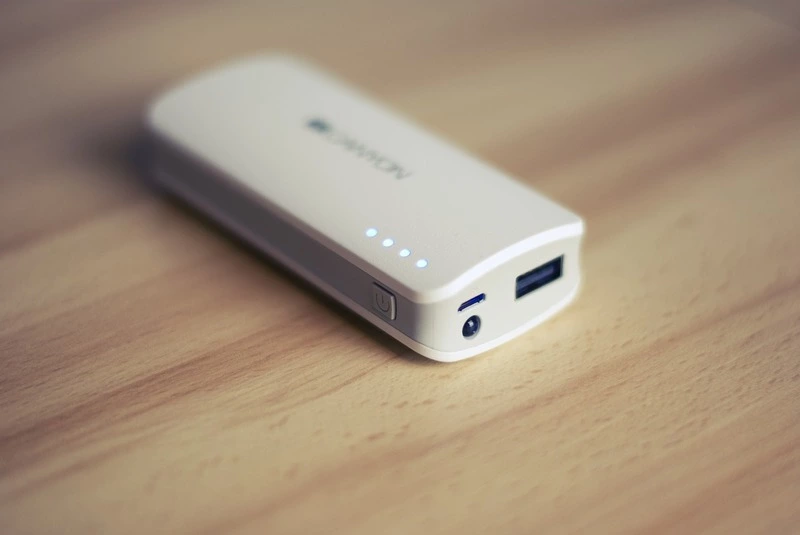
A power bank, (or external battery pack) is a portable charging device.
They can recharge USB-enabled electronic devices such as smartphones, tablets, headphones, cameras, and more.
In fact, a power bank is a portable battery pack made up of many rechargeable battery cells, the same as your smartphone or electric vehicle battery. These cells store electrical energy from a power source for later use.
As mentioned power banks are commonly used to charge mobile phones in the event of a low or dead battery. They are a must-have for people who like to hike or camp as it provides the ability to recharge your cell phone battery while being outside in nature. They are also used by people who spend time away from their home, office, or frequently travel. Some power banks are designed for travelers or holidaymakers to charge their laptops too. Generally, they are perfect for people who need that little bit more juice!
Therefore potentially saving a lot of frustration or saving you from being stuck somewhere when your battery dies.
All power banks can be recharged by an electric socket or by plugging into an external power source.
Types of Power Banks – Size, Features, Capacity
You can buy power banks in a range of sizes; small ones that can fit on a key chain to very large ones that are transported or used in caravans, motor homes, or recreational vehicles (RVs).
They can come with extra features such as a flashlight; have enough power to charge multiple devices simultaneously, and a range of ports to charge other gadgets – not just your smartphone!
Power banks come in a different range of capacity, measured in mAh (milliamp-hour). The most common ranges include: 5000 mAh, 10,000 mAh, 20,000 mAh, 40,000 mAh and 50,000 mAh. Some of the largest capacity power banks available on the market can provide over 180,000 mAh!
Other Names/Terms Used for Power Bank
A power bank is also known or described as:
- External Battery
- Battery Pack
- Battery Bank
- Portable Power Pack
- Portable Battery
- Solar Power Bank
- Solar Charger Battery Bank
How to Charge a Power Bank?
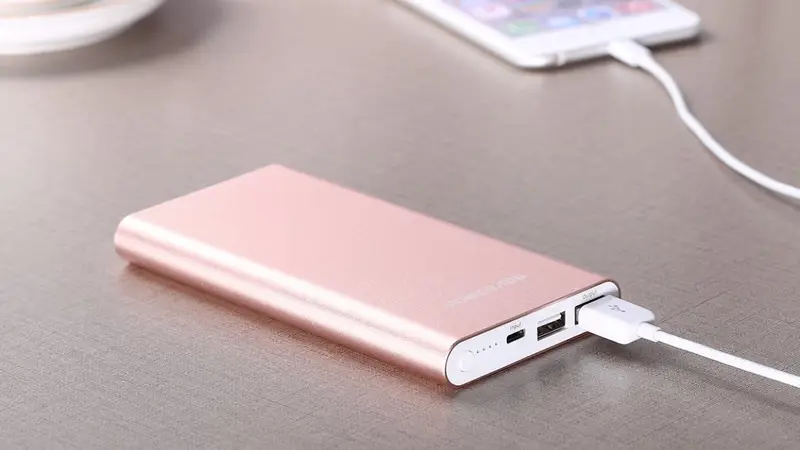
A portable power bank may be charged in two ways:
- Wall Outlet (socket)
- External or Secondary Power Source (like solar energy)
Wall Outlet (socket)
Power banks often come bundled with a wall adapter. This adapter can be used to charge your power bank through a wall socket.
To recharge your power bank, you need to plug one side of the adapter into the power bank and the other into a wall outlet. Then charging will start. This functionality of a power bank is great, but, the grid is not accessible everywhere.
This is where external or secondary power sources come in handy!
Solar Power Banks – Secondary Power Source
If you’re going on an outdoor adventure and don’t have access to electricity, you can find power banks that can be charged through a secondary power source. There are now many power banks available with an integrated solar panel, these are commonly referred to as solar power banks. The integrated solar PV panels can provide between 5 to 15 Watts of power.
Solar energy has many applications, including charging power banks, but from my experience, the integrated solar panel with a power bank can’t efficiently generate enough power to charge a power bank that has run completely flat, in a short amount of time, as they have less power rating.
It takes almost 30-60 hours in the full sun to charge up the solar power bank through its integrated solar panels.
Therefore solar power banks are best as a backup solution used to ‘top up’ a device when other sources of power are unavailable.
A more reliable and efficient way to recharge your power bank is to use a special device called a solar charger. Let’s take a look at what a solar charger is and how you may charge your power bank with one!
Can a Solar Panel Charge a Power Bank? The Solar Charger Can!
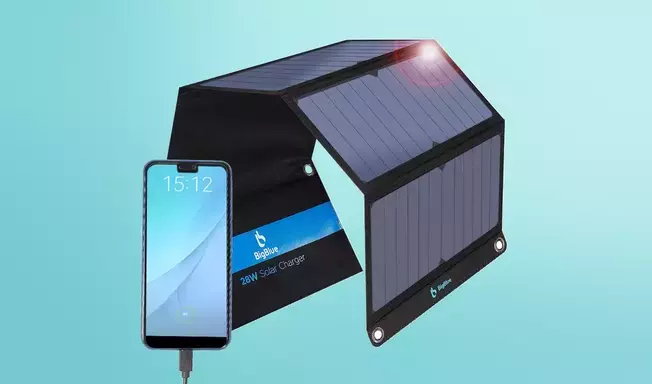
A solar charger or solar panel charger is a gadget designed to charge your electronic devices using solar energy. When the solar panels of a solar charger are exposed to direct sunlight, they will produce the maximum amount of electricity. The generated electricity can then be used to charge a power bank via its external USB ports.
Read more about the science of solar panels – how do solar panels work?
Solar chargers have different ranges, many providing between 20-60 watts from their solar PV modules.
They are also referred to by different names, so you may see these devices called solar phone chargers (because people use them to charge their phones specifically) or portable solar panels.
Solar chargers are most often used on outdoor excursions as there isn’t convenient access to electricity (such as while camping or backpacking), making them ideal for such activities!
But how can you tell whether a solar charger (portable solar panel) is good enough to charge your power bank?
Keep on reading to learn how to pick the best portable solar charger for your power bank.
How to Choose the Right Portable Solar Charger?
Choosing the right type of solar charger for your power bank can vary based on your needs and preferences and they are available in a variety of shapes, sizes, power ratings, and brands.
Here are some factors to look for when selecting the correct solar charger for your power bank:
#1 Solar Panel Wattage
The wattage of the solar panels in a solar charger is a measurement of how many watts of power can be produced from solar energy.
A higher wattage will give you more power which can charge your power bank faster. But, this comes at the cost of increased weight. The most common wattages on solar chargers are 20-60 Watts.
#2 Solar Panel Conversion Efficiency
A solar charger that is efficient captures solar energy quickly, so you can be less concerned about whether or not there is enough sunshine. As a result, they are practical all year round, even during the winter or on cloudy days.
The higher the conversion efficiency, the faster your devices will be recharged!
#2 Cables & Connectors (USB Outputs)
Solar chargers can charge a variety of gadgets, such as power banks, phones, cameras, LED flashlights, MP3 players, and so on.
A solar charger with a higher number of USB outputs will allow you to charge many devices simultaneously. But, if you only want to charge your power bank then a single USB output should be enough!
#3 Smart Charging Technology
Most high-end solar chargers use smart charge technology. This technology allows a solar charger to efficiently charge your power bank or other devices. Solar charging technology can also identify your device and then deliver the ideal charging rate (depending on voltage and current). Charging speed can vary from medium to fast charging depending on the type of the device.
Furthermore, this sophisticated charging technology can protect your device from overcharging, overheating, and short-circuit damage. So when buying a solar charger make sure it uses smart charging technology.
#4 Portability
When it comes to traveling with a solar charger, the size and weight of the product are important factors. A lightweight, small-sized solar charger is easy to carry around. This is often a great option for travelers, backpackers, hikers, and campers.
Frequently Asked Questions (FAQs)
Here are some FAQs about power banks and solar chargers:
How many times can a 40,000 mAh power bank charge my phone?
The battery capacity of your mobile phone and the power bank is important when figuring out how many times it can charge your phone.
It is a good idea to multiply the power bank’s capacity with a derating factor of 80% so that we account for some technical factors. This includes losses, conversion efficiency, and not depleting a power battery bank completely. To determine how many times your phone may be recharged, divide the power bank’s reduced capacity by the battery size of your phone.
For example, if your power bank has a capacity of 40,000 mAh and your phone has a 3,000 mAh battery, here’s how to determine charge counts:
Derated Power Bank Capacity = 40,000 * 0.80 = 32,000 mAh
Charge Counts = 32,000 mAh / 3,000 mAh = 10.6 ≈ 10 times
So this means, that you can charge a 3,000 mAh mobile phone up to 10 times using a 40,000 mAh power bank.
How to effectively charge a power bank using a solar charger?
Portable solar chargers use solar PV panels to generate electricity from sunlight. To effectively charge your power bank in the minimum amount of time, make sure that the solar sunlight directly hits the panels of the solar charger. You can also charge your power bank when there is less sun, for example on cloudy days or where direct sunlight is not available. However, in these settings, the power bank will not be charged as efficiently or quickly.
Another thing to keep in mind is that the ambient temperature should not be too high. Extreme heat can harm a solar PV panel, affecting its ability to charge a power bank.
Does a solar charger take a lot of space?
No, since solar chargers are designed to be portable they take less amount of space. Almost all solar chargers have compact size (almost 12 × 6 × 1.5 in. when folded) and foldable solar panels.
How much does a solar charger weigh?
Solar chargers are light enough to fit into any camping backpack or hiking daypack. Most solar chargers weigh under 20 oz or approx. 570 gr.
Can a charge controller damage my power bank?
No, almost all solar chargers come with solar charge controller functionality. The solar charge controller function ensures that your power bank does not overcharge.
Summary
Solar energy is a clean and renewable form of energy. Using solar PV panels we can generate and store solar energy. A solar charger is one such device that utilizes solar PV technology to charge a power bank or other gadgets.
The solar charger allows you to be more eco-friendly by utilizing clean solar energy. As a result, buying one will be a smart step towards lowering your carbon footprint and give you an excuse to get out in the sun
Thanks for reading our article on solar panels charging power banks. We’d love to know your feedback on this article, so please drop us a note in the comments below.





![Types of Engineers and What they Do [Explained]](https://www.engineeringpassion.com/wp-content/uploads/2022/04/types-of-engineers-and-what-they-do-280x210.jpg)





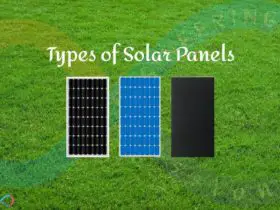
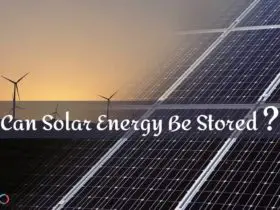

I didn’t know that it takes around 30-60 hours to charge a bank. I want to get completely off the grid in my neighborhood. I’ll have to hire a contractor to install a solar battery for me.